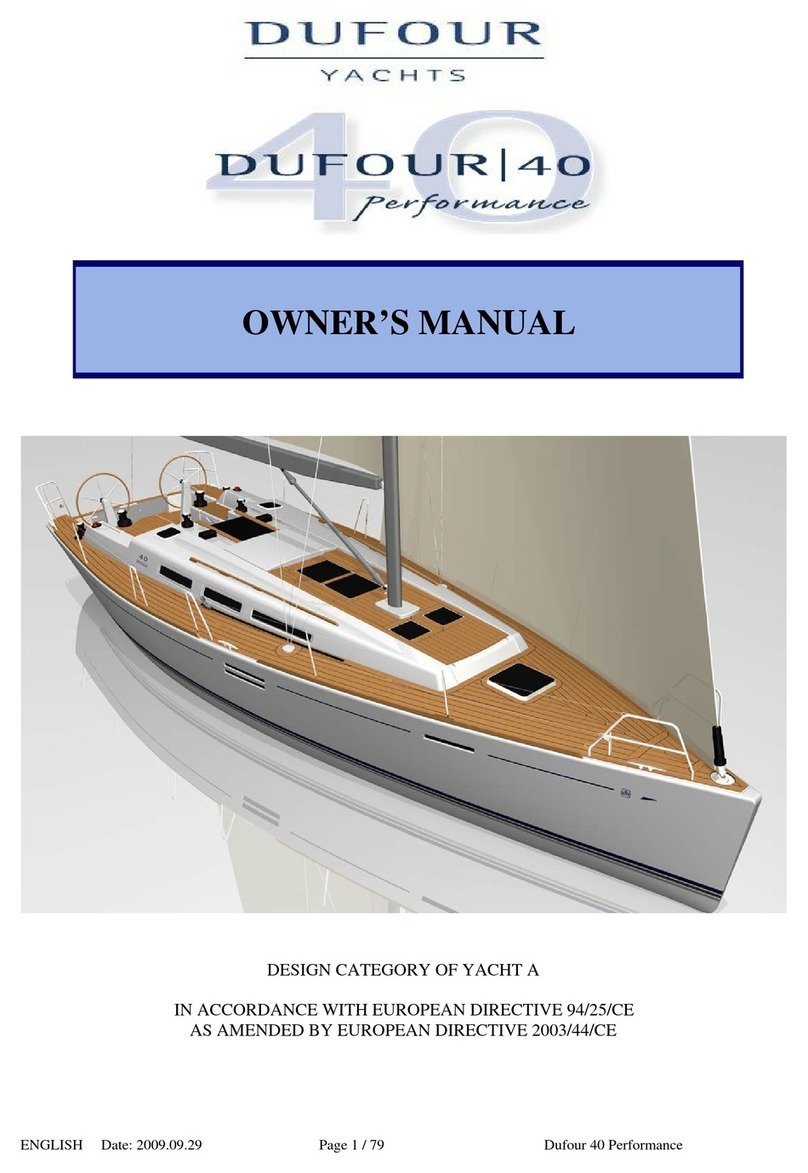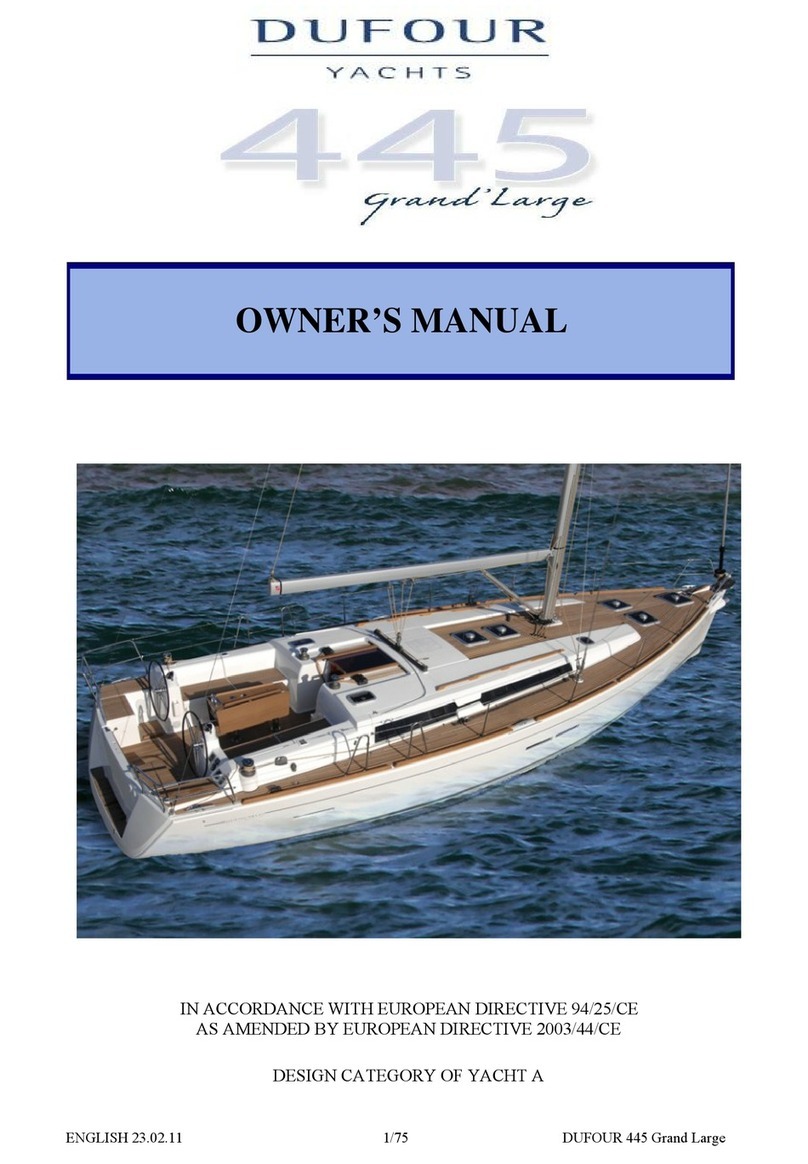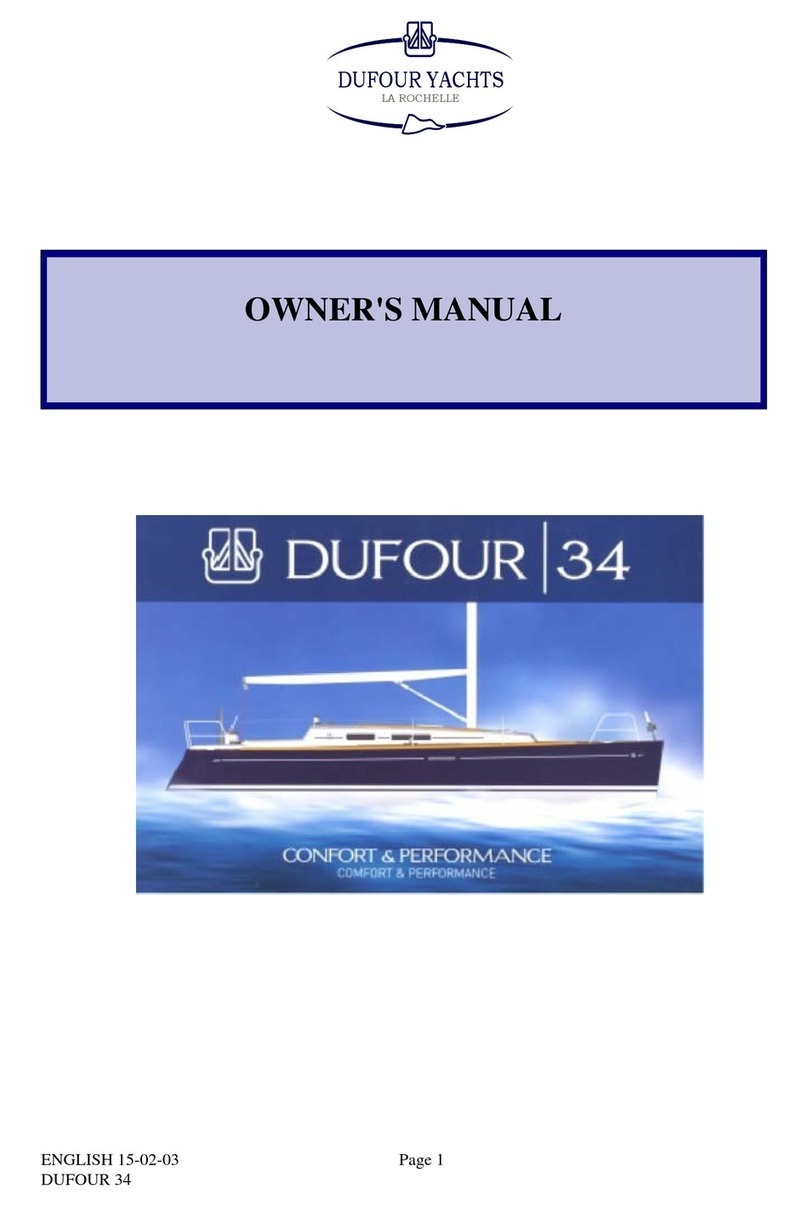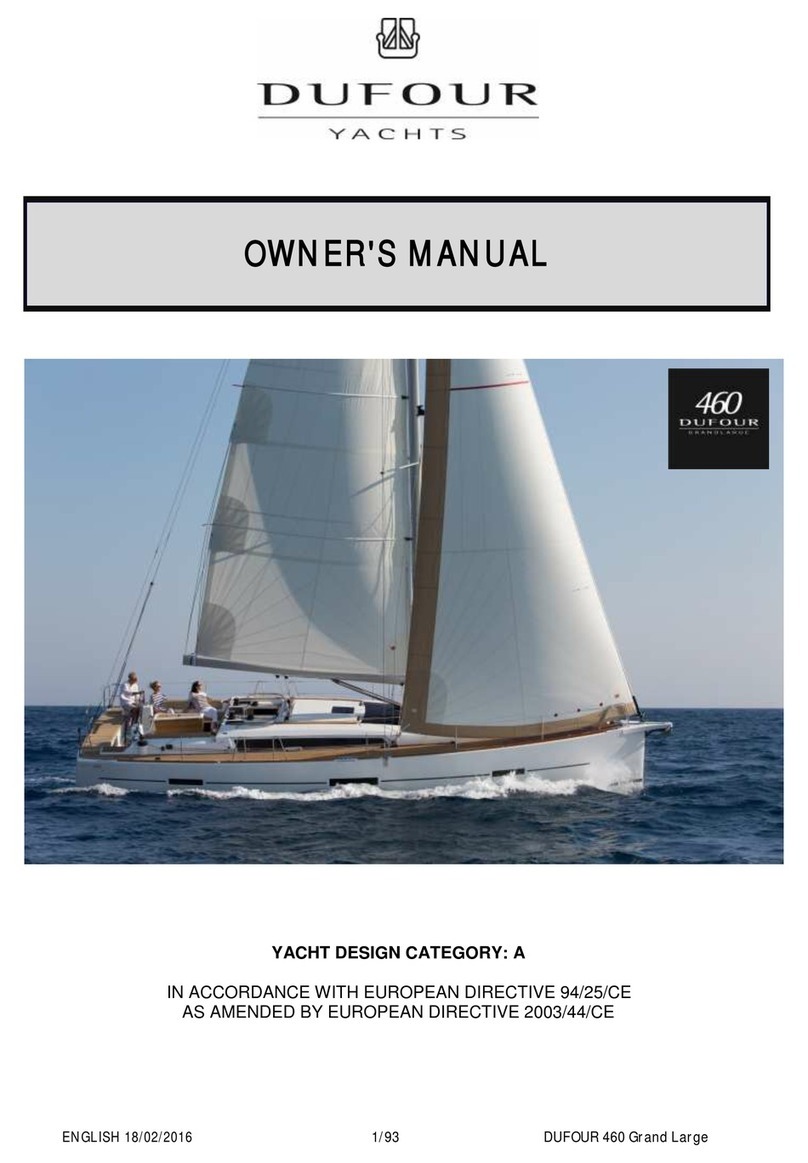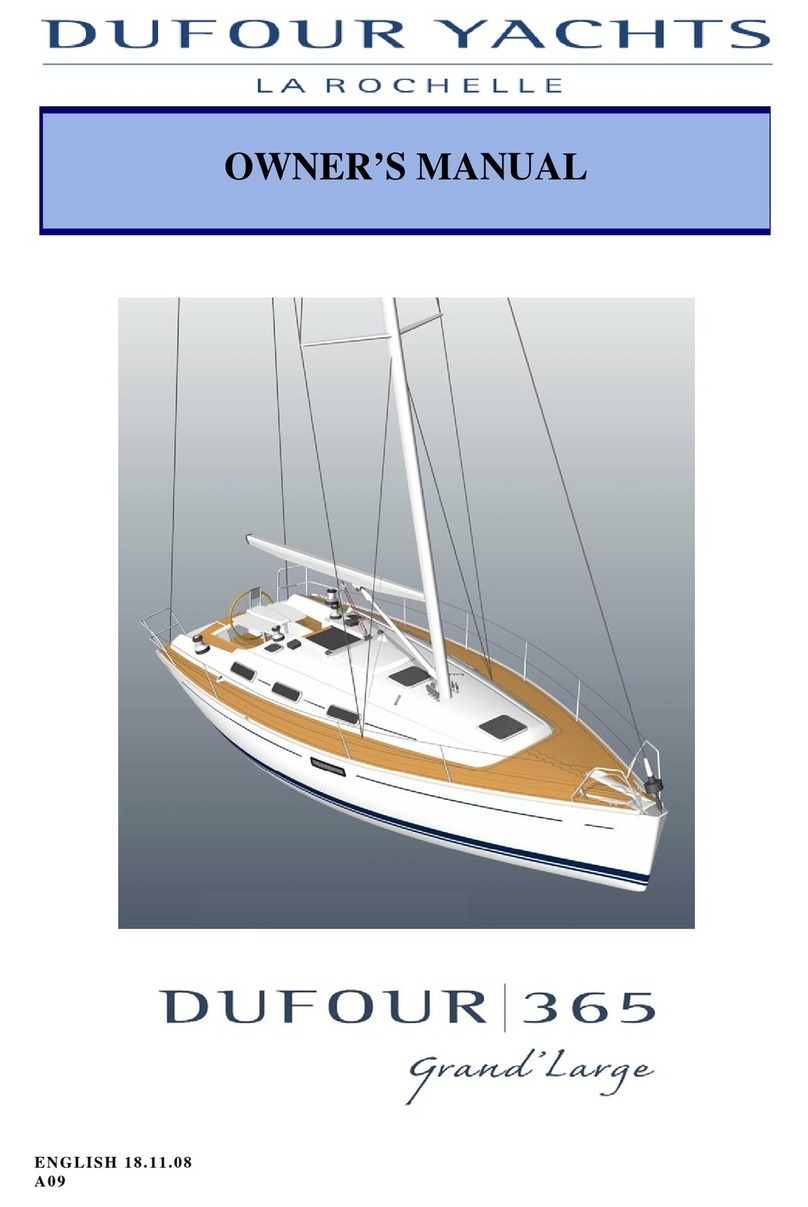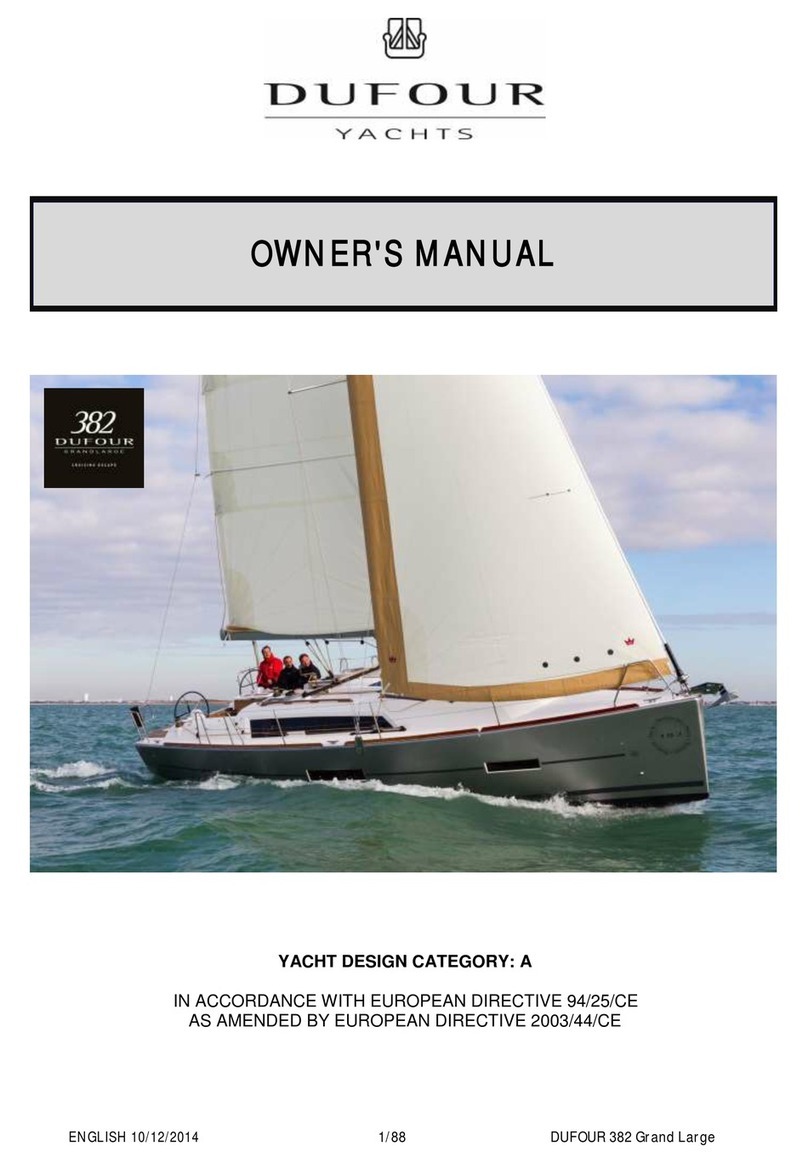
ENGLISH 2019-06 7/88 DUFOUR 382 Grand Large
INTRODUCTION
DUFOUR YACHTS is pleased to present you with this Manual which will help you get to know your boat
better.
This Manual has been produced to help you use your boat safely and enjoyably. It contains details of the
boat, the equipment supplied or fitted, its systems and information about their use. Read it carefully and
familiarize yourself with the boat before using it.
This Owner’s Manual is not a course in sailing safety or seamanship. If this is your first boat or you are
changing to a type of boat you are unfamiliar with, for your convenience and safety, make sure you gain
experience in handling and using it before taking command. Your agent, national sailing or cruising
federation or yacht club will be happy to give you information about sailing schools or qualified instructors
in your area.
Ensure that forecast wind and sea conditions correspond to the design category of your boat, and that you
and your crew are capable of handling the boat in these conditions. Even when your boat is suitable for
them, the sea and wind conditions corresponding to design categories A, B, and C vary from severe storm
for category A to severe conditions for the top end of category C, subject to dangers of abnormal gusts or
waves; these are dangerous conditions in which only an experienced, trained crew in good shape, sailing a
properly-maintained boat, can sail in a satisfactory manner.
This Owner's Manual is not a detailed maintenance or repair guide. In the event of problems, consult the
boatbuilder or their representative. If a maintenance manual is provided, be sure to use it.
Always employ the services of an experienced professional for maintenance, fitting accessories, or
modifications. Modifications that could affect the characteristics of the boat must be assessed, performed
and documented by qualified personnel. The boatbuilder cannot be held responsible for modifications
made without their approval.
In certain countries, a skipper's license or some form of authorization is required, or special rules and
regulations are applicable.
Always maintain your boat correctly and make allowances for deterioration due to age or resulting, where
applicable, from heavy or unsuitable use. Any boat, however sturdy, can be severely damaged if it is used
incorrectly. This is incompatible with safe sailing. Always suit your speed and heading to the prevailing sea
conditions.
If your boat is equipped with a life-raft, read its instruction manual carefully. The crew must have all the
safety equipment on board (life-jackets, harnesses, etc.), corresponding to the type of boat, weather
conditions, etc. In some countries, this equipment is mandatory. The crew must be familiar with the use of
all the safety equipment and the emergency safety procedures (man overboard recovery, towing, etc.);
training sessions are regularly organized by sailing schools and clubs.
It is recommended that all persons wear appropriate buoyancy aids (life-jackets, personal flotation devices)
when on deck. It should be noted that in certain countries, it is compulsory to wear a buoyancy aid
(complying with national regulations) at all times.
KEEP THIS MANUAL IN A SAFE PLACE AND PASS IT ON TO THE NEW OWNER IF YOU
SELL THE BOAT.
WARNING: Our boats are regularly improved in light of our customers’ experiences and
research carried out by the shipyard. As a result, the specifications given in this Owner’s
Manual are not contractually binding and may be changed without notice and without any
obligation to update them. This manual is intended to cover as much information as
possible, so certain equipment or paragraphs might not apply to your boat. In case of
doubt, please refer to the inventory which should have been given to you by your agent
when you placed your order.
